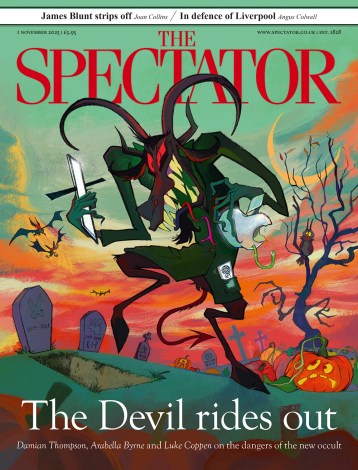In the award-winning musical Avenue Q, filthy-minded puppets sang about schadenfreude, internet porn, loud sex, the uselessness of an English literature degree — and racism. Or, more specifically, they sang about the ubiquitous human habit of
stereotyping people by race:
Everyone’s a little bit racist, sometimes.Doesn’t mean we go around committing hate crimes.Look around and you will find,No one’s really colour blind.Maybe it’s a fact we all should face.Everyone makes judgments…Based on race.
The puppets were right: everyone makes judgments based on race. Humans are lazy creatures who like mental short cuts. Thinking in shades of grey is more effortful than thinking in black and white. Evaluating a new person afresh, based on their unique characteristics, is slower than falling back on a ready made judgment. If you’ve spent time with a two-year-old, or if you’ve used psychedelic drugs, you might have glimpsed what it’s like to see an individual blade of grass as itself, and not just as an exemplar of the category ‘grass’. It’s exhausting.
You and your immigrant neighbour are all part of the same family tree
In How to Argue with a Racist, Adam Rutherford uses his expertise in genetics to try to get us to see people the way a person on LSD might see a field of grass. That is, he wants us to see individual humans as themselves, rather than as exemplars of racial categories. Overcoming deeply ingrained patterns of mind, while also providing a crash course in genetic biology, is a tall order for any book, particularly one so brief. To accomplish his goal, Rutherford has densely packed each section of his book with scientific and historical details, all of which converge on a central theme — it’s ‘wickedly complicated’.
Part I begins by challenging the apparent simplicity of racial distinctions based on skin colour or other observable physical characteristics. Consider, for instance, that two Africans, who would both be assigned the same race based on their skin colour, might be more different genetically than the Scots are from the Japanese.
Part II then challenges the idea of racial purity, the fiction that there are groups of people (like ‘the Scots’ or ‘the Japanese’) who can trace their ‘blood’ to just one set of ancestors living in one particular place. No such pure bloodlines exist; there really is no true Scotsman. Because people have ‘had sex wherever and whenever they could’, we don’t have to go back too far in history to find a time when everyone alive then was the ancestor of everyone alive now. You and your immigrant neighbour are all part of the same family tree.
Next, parts III and IV challenge the idea that some racial groups are ‘naturally’ more athletic, more musical or more intelligent. Do African-Americans dominate certain track and field events because they have a ‘speed’ gene? Are the genetic diseases more common in Ashkenazi Jews evidence of selection for high intelligence? One by one, Rutherford picks up an apparently neat story about racial differences and turns it this way and that, exposing its holes and flaws and tattered seams.
Some of the science here has been explained in other books, including Rutherford’s own A Brief History of Everyone Who Ever Lived, and more recently, David Reich’s Who We Are and How We Got Here. What makes the organisation of the scientific material different in this book is right there in the opening sentence: ‘This book is a weapon.’ Rutherford continues: ‘These pages … will provide a foundation to contest racism.’ Yet despite its confident title, How to Argue with a Racist is not entirely sanguine about the power of scientific argument. ‘Arguing with racists,’ Rutherford says, ‘is a fairly fruitless endeavour, and exhausting’ — and he quotes Jonathan Swift: ‘Reasoning will never make a man correct an ill opinion, which by reasoning he never acquired.’
Rutherford’s uncertainty regarding how useful science is for combatting racism reflects a deeper uncertainty about what, exactly, is the relationship between sciency-sounding ideas about biological differences between racial groups and the violence and vitriol that he calls ‘avowed’ or ‘overt’ or ‘extreme’ racism. After all, as the puppets of Avenue Q cheerfully protested, the use of racial judgments ‘doesn’t mean we go around committing hate crimes’.
But ideas about racial difference can, indeed, incite violence. Consider Dylann Roof, who gunned down nine black parishioners in a Charleston, South Carolina church after being radicalised on the internet. Before the massacre, Roof penned a racist screed that asked the exact same question about racial differences that How to Argue with a Racist considers at length: ‘How could our faces, skin, hair and body structure all be different, but our brains be exactly the same?’
It is tempting to answer that incendiary question by insisting that everyone’s brains really are exactly the same. As the great evolutionary biologist Theodosius Dobzhansky observed back in the 1960s, ‘if you maintain that people should be equal, then it is convenient to argue that the differences between them are accidental and trivial’. This, for instance, is the argument that Ibram Kendi made in his similarly titled How to Be an Antiracist. An anti-racist is someone ‘who is expressing the idea that races are meaningfully the same in their biology’.
Rutherford avoids the temptation of insisting that everyone is the same. Instead, he presents a more difficult — but more accurate — argument, describing both the reality of human genetic variation and the fiction of racial purity. Yes, genetic differences between people are important, not just for their bodies, but also for their brains and behaviours. But the physical characteristics that we use to lump people together into races are terrible indicators of how genetically similar those people are. And when considering achingly complex domains of human achievement, such as music, sport, art and science, it has proved nearly impossible to separate out genetics from the messiness of human history, from colonialism and culture.
Rereading How to Argue with a Racist a second time, I began to imagine it as a letter, directed to one racist in particular — to a younger Dylann Roof, as he was being drawn into the darker corners of the internet, before he picked up a gun to commit mass murder. Could science and history, clearly presented, have cut through the thicket of poisonous ideas that ultimately choked off Roof’s capacity for the most basic human empathy? Could arguing with that particular racist about genetics have saved lives? That possibility, slim as it might be, is why How to Argue with a Racist is an important book.






Comments